- JST Home
- /
- Strategic Basic Research Programs
- /
 ACT-X
ACT-X- /
- Research Director/
- Frontier of mathematics and information science/
- [Math and Info] Year Started : 2020
[Math and Info] Year Started : 2020
Yusuke Aikawa
Study on the security and efficiency of post quantum cryptography from elliptic curves
Grant No.:JPMJAX2001
Researcher
Yusuke Aikawa

Researcher
Information Technology R&D Center
Mitsubishi Electric Corporation
Outline
Large scale quantum computers are said to threaten public key cryptosystems that are currently in use. Researches and the standardization of post quantum cryptography which is resistant to cryprtoanalysis done by both classical and quantum computers are now in progress. However, there are still many issues about the security and efficiency of such cryptography. This project studies post quantum cryptography using elliptic curves from the perspective of number theory. Through solving security and efficiency problems, this project aims to realize safety and security in the future quantum information society.
Takuto Asakura
Research on understanding academic literature with synthetic analysis on mathematical expressions and natural language
Grant No.:JPMJAX2002
Researcher
Takuto Asakura

Graduate Student
Graduate School of Information Science and Technology
The University of Tokyo
Outline
Technologies for automatic analysis for academic literature is desired to utilize a vast amount of knowledge in the literature. As the first step for such an analysis, this research project aims to focus on the small structures, tokens, in formulae, and develop a new methodology to associate each token to corresponding mathematical concepts. Formulae and texts are complementary to each other, and thus those in documents cannot be understood independently. Moreover, formulae in texts have various ambiguities. Synthetic analysis on mathematical expressions and natural language will be necessary to overcome these large barriers.
Yusuke Izawa
A Hybrid JIT Compiler for Language-Agnostic Faster Execution
Grant No.:JPMJAX2003
Researcher
Yusuke Izawa
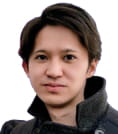
Graduate Student
School of Computing
Tokyo Institute of Technology
Outline
Most virtual machines employ just-in-time (JIT) compilers to achieve high-performance. Trace- and method-based compilations are two major compilation strategies in JIT compilers. In general, the former excels in compiling programs with more in-depth method calls and more dynamic branches, while the latter works good for a wide range of programs. In this work, I present a new approach, namely, the meta-hybrid JIT compiler framework. It combines trace- and method-based compilations to utilize the advantages of both strategies. Moreover, it is realized as a meta JIT compiler framework; thus, we can generate a virtual machine with a hybrid JIT compiler that can apply different program parts by merely writing an interpreter with our framework.
Isao Ishikawa
Theoretical analysis of Koopman operators for data analysis via the theory of function space
Grant No.:JPMJAX2004
Researcher
Isao Ishikawa
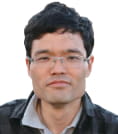
Associate Professor
Center for Data Science
Ehime University
Outline
Koopman operators have been getting popular in the fields of nonlinear dynamical system and machine learning in the context of dynamical system. In this study, we propose a new theoretical framework of Koopman operators for data analysis. We employ the theory of function space that has been extensively developed in pure mathematics, and clarify a relationship between dynamical systems and mathematical structures of function spaces where Koopman oeprators are acting. We introduce the theory of generalized spectrum for linear operators as well, and aim to establish its computation method for empirical study for data analysis.
Takashi Ishida
Bayes Error Estimation and Regularization Methods
Grant No.:JPMJAX2005
Researcher
Takashi Ishida
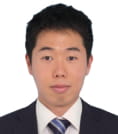
Lecturer
Graduate School of Frontier Sciences
The University of Tokyo
Outline
In supervised learning, Bayes error is the best achievable prediction error for a given problem or task. The aim of this study is to propose a Bayes error estimation method. I am also interested in using Bayes error estimation in order to study overfitting and regularization methods.
Yo Ehara
Innovative Technology Base for Stable Recommendation of Educational Materials based on Natural Language Understanding
Grant No.:JPMJAX2006
Researcher
Yo Ehara
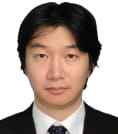
Associate Professor
Faculty of Education
Tokyo Gakugei University
Outline
We intend to study and develop mathematical models that can be applied to the recommendation of educational materials to learners to improve their abilities in a stable manner. Systems deploying this recommendation technology base can analyze the content of educational resources based on natural language understanding, estimate the risks of learning failures, and consider their effects on learning to ensure effective material recommendation. Unlike lectures, which typically require learners to have sufficient prior knowledge, the proposed technology base enables learners to train themselves by merely following the recommended educational materials without prerequisites. The ultimate objective is to dramatically improve the level of learner achievement through self-study and change the shape of education by facilitating systematic education without prerequisite knowledge.
Takehiko Ohkawa
Human Behavior Understanding via Imitative AI
Grant No.:JPMJAX2007
Researcher
Takehiko Ohkawa
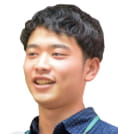
Graduate Student
Graduate School of Information Science and Technology
The University of Tokyo
Outline
For a sustainable society, transferring and preserving the skills of experts is an important issue. The purpose of the project is to formalize “tacit knowledge” through skill acquisition by human-imitative AI. I build an action recognition model by data-driven learning in first-person videos and an imitation agent that reproduces expert behavior by generative modeling, such as reinforcement and imitation learning. I take the approach to understand human behavior from both sides of these cognitive and generative aspects.
Yuki Onishi
Building Subsumption Architecture Based on Riemannian Metric Synthesis
Grant No.:JPMJAX2008
Researcher
Yuki Onishi
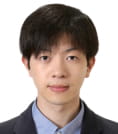
Graduate Student
School of Engineering
Tokyo Institute of Technology
Outline
Autonomous robots in dynamic and/or unknown environments still have many problems. This research focuses on Subsumption Architecture (SA), a method to generate robot behaviors in real time based on synthesis of local feedback control laws. Though it experimentally works well, its theoretical analysis and design is hard. To tackle this problem, this research applies Riemannian geometry and tries to establish a way how to build SA whose stability and optimality are theoretically guaranteed. To evaluate results, a child-size humanoid robot will be developed and used to complete complex manipulation tasks autonomously.
Ryoshun Oba
Construction of a theory of analyzing the discrete structure having distance constraint
Grant No.:JPMJAX2009
Researcher
Ryoshun Oba
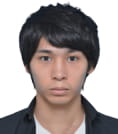
Graduate Student
Graduate School of Information Science and Technology
The University of Tokyo
Outline
I extend the existing graph rigidity theory of finite frameworks to periodic frameworks and create a theory of analyzing crystals. I also study the combinatorial characterization of generic global rigidity of frameworks and design a fast algorithm which does not involve coordinate calculation. Furthermore, I apply these method to the analysis of chromatic number or kissing number.
Motoko Kato
Geometric classifications of groups and their applications to cryptography
Grant No.:JPMJAX200A
Researcher
Motoko Kato
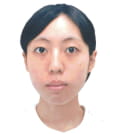
Associate Professor
Faculty of Education
University of the Ryukyus
Outline
From a perspective of geometric group theory, this research addresses various notions of nonpositively curved groups, and aims to clarify relationships among them. We feature Artin groups and study their actions on nonpositively curved spaces. We focus on algorithmic properties of nonpositively curved groups and aim for applications to cryptography.
Junichiro Kadomoto
Shape-changeable information device with embedded microchips
Grant No.:JPMJAX200B
Researcher
Junichiro Kadomoto

Assistant Professor
Graduate School of Information Science and Technology
The University of Tokyo
Outline
Widespread research is being conducted on microrobots that form swarms. One of the goals of these studies is to build a distributed computing system by installing a processor and wireless communication circuit. The challenge is how to mount circuit hardware on microrobots, which have restrictions on size and power consumption. In this research project, I will try to integrate a low-power processor and wireless communication/power supply circuits on a single small chip. The realization of shape-changeable information devices consisting of a group of microrobots that are smaller than ever before will be achieved.
Kei Kimura
Algorithm Development for integer programming using polymorphisms
Grant No.:JPMJAX200C
Researcher
Kei Kimura
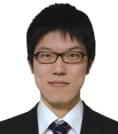
Associate Professor
Faculty of Information Science and Electrical Engineering
Kyushu University
Outline
Integer programming has been used to solve optimization problems in, e.g., production planning, human resource planning, logistics, finance, sports, and entertainment. On the other hand, current algorithms for the integer programming has limitation on the amount of data that can be handled and/or applicable problems. The aim of this project is to develop faster and more-general-purpose algorithms for integer programming using polymorphisms, a generalized concept of automorphisms of a solution set.
Erika Kuno
Quasi-isometry classification of mapping class groups and the applications to machine learning
Grant No.:JPMJAX200D
Researcher
Erika Kuno
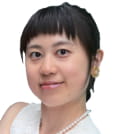
Assistant Professor
Graduate School of Science
Osaka University
Outline
The goal of this research is to classify mapping class groups of surfaces by quasi-isometry. Particularly, we focus on the mapping class groups of nonorientable surfaces. In this research, we construct right-angled Artin subgroups of the mapping claass groups of nonorientable surfaces and determine whether the embeddings are quasi-isometric, and we make clear whether the mapping class groups of nonorientable surfaces are quasi-isometric to the mapping class groups of orientable surfaces. Furthermore, we try to apply mapping class groups and quasi-isometry maps to machine learning.
Yuko Kuroki
Learning from limited information and design of mathematical optimization algorithms
Grant No.:JPMJAX200E
Researcher
Yuko Kuroki

Assistant Professor
Graduate School of Information Science and Technology
The University of Tokyo
Outline
Statistical machine learning is a mathematical technology that aims to extract useful information hidden in data. Despite recent developments in machine learning, there are still challenges to design valid and robust algorithms for incomplete settings where we cannot collect fully informative data or we can only observe data partially. In this project, we aim to develop a new learning paradigm for such settings based on both mathematical optimization and statistics.
Hiroshi Kera
Data-driven computer-algebraic geometry
Grant No.:JPMJAX200F
Researcher
Hiroshi Kera
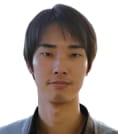
Assistant Professor
Graduate School of Informatics
Chiba University
Outline
In this project, we aim at establishing a new research field, data-driven computer-algebraic geometry, which incorporates the data-driven framework of the modern applied information science (e.g., machine learning) into the computation and algorithms in computer algebra and algebraic geometry. In data-driven computer-algebraic geometry, all computations are not handled in a symbolic manner and instead realized by efficient numerical computation focusing on the evaluated values of symbolic objects (e.g., monomials and polynomials) at given data.
Daiki Suehiro
Machine Learning Reductions for Unified Analysis
Grant No.:JPMJAX200G
Researcher
Daiki Suehiro

Associate Professor
Graduate School of Data Science
Yokohama City University
Outline
There are various machine learning problems in various domains. However, it is hard to perform theoretical analysis individually for various learning problems. This project aims to develop a framework that can reduce various learning problems to another learning problem. This framework enables unified analysis across various learning problems beyond the domains. The first step is to consider the reduction framework to multiple instance learning problems. The final goal is to construct a general reduction framework.
Ken Takaki
Support for selective listening of online and offline speakers by utilizing the cocktail party effect
Grant No.:JPMJAX200H
Researcher
Ken Takaki
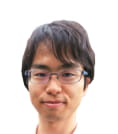
Graduate Student
Graduate School of Engineering
The University of Tokyo
Outline
Online conferencing is becoming more and more popular, where users need to hold conversations with people in remote locations and sometimes with those around them. As a result, it is becoming increasingly important for users to concentrate on hearing only what they are interested in from online and offline speakers. This work will utilize the cocktail party effect and propose an audio processing system that supports selective listening between online and offline speakers.
Sho Takase
Embedding construction with random vectors
Grant No.:JPMJAX200I
Researcher
Sho Takase
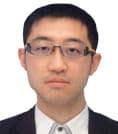
Assistant Professor
School of Computing
Tokyo Institute of Technology
Outline
To reducce the parameter size related to embeddings, this study aims to propose a method to construct embeddings whose parameter size is independent from the vocabulary size. In detail, the proposed method assigns random vectors to each word to construct a unique vector, and then applied some neural networks to the unique vector to increase its expressiveness. I investigate whether the proposed method can achieve the comparable performance to the conventional embeddings with fewer parameters through experiments on widely used natural language generation tasks: machine translation and summarization.
Hiroshi Tsuji
Geometric study of high dimensional Banach spaces on basic quantum information theory
Grant No.:JPMJAX200J
Researcher
Hiroshi Tsuji

Graduate Student
Graduate School of Science
Osaka University
Outline
It is known that “Asymptotic Geometric Analysis” (AGA) is one of the methods on basic quantum information theory. The aim of that field is to study properties of convex bodies in high dimensional spaces. In particular, a recent important object of research is the class of log-concave probability measures which is wider than one of convex bodies. The purpose in this project is to reveal geometric properties of log-concave probability measures by applying optimal transport theory and information theory. This project is expected to apply to basic quantum information theory in the future.
Yuto Nakashima
Development of String Data Processing Method Using Lexicographic Orders
Grant No.:JPMJAX200K
Researcher
Yuto Nakashima
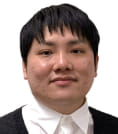
Assistant Professor
Faculty of Information Science and Electrical Engineering
Kyushu University
Outline
Several information technologies use techniques of string data processing. Development of efficient methods for processing string data requires to understand string structures and their characteristics. There are many string structures that are based on lexicographic orders. This project aims to clarify the effects to lexicographical string structures by changing the lexicographic order. Moreover, we will develop a new approach for string data processing which is based on the properties.
Yuta Noma
Fabrication Methods to Create Rigid Origami Structures that are Large Scale and Deployable
Grant No.:JPMJAX200L
Researcher
Yuta Noma
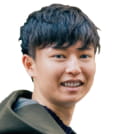
Graduate Student
Graduate School of Engineering
The University of Tokyo
Outline
Rigid origami structures can be easily enlargened when used and easily folded when unused, which is a great advantage for creating large scale structures. However, their manufacturing and assembling processes often become complicated, which hinders the technology to be widespread. In this project, we will create an algorithm that generates from the users’ input 3D shape a polygonal net, which can be easily assembled using rigid panels and strings. To achieve this goal, we will not only construct mathematical theories but also fabricate objects in practice and find the constraints on the final shape. The resulting system will allow novice users to create large scale and deployable structures, which opens up the possibilities of personal fabrication.
Changyo Han
Three-dimensional Shape Measurement using Embedded Wireless Sensors
Grant No.:JPMJAX200M
Researcher
Changyo Han

Assistant Professor
Interfaculty Initiative in Information Studies
The University of Tokyo
Outline
Clay is an excellent material that has plasticity and adhesiveness, and can be easily made into arbitrary three-dimensional shapes. However, it is difficult to capture the shape of the clay during modeling, resulting in lack of assistive tools for clay modeling. This research aims to develop a technology to capture the 3D shape of the clay without interfering with the modeling process by embedding multiple wireless sensors that can measure the shape of the clay. We also propose an interactive system for supporting the modeling process.
Yoshiaki Bando
Crowded Acoustic Scene Mapping Based on Statistical Spatio-Temporal Models
Grant No.:JPMJAX200N
Researcher
Yoshiaki Bando
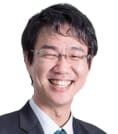
Senior Researcher
Information Technology and Human Factors
National Institute of Advanced Industrial Science and Technology
Outline
The robots working in our everyday lives have to robustly comprehend their surrounding environments even when they are in crowded spaces such as station platforms, busy streets, and airports. As a step to develop such a robot, the goal of this project is to establish a robot audition system that can precisely recognize crowded acoustic scenes in real time with few prior information. Specifically, this project aims to develop a robust robot audition system based on a deep Bayesian spatio-temporal model that can handle the real crowded scenes in a unified framework.
Matthew・James Holland
Learning with guarantees under more diverse notions of risk
Grant No.:JPMJAX200O
Researcher
Matthew・James Holland

Assistant Professor
Institute of Scientific and Industrial Research
Osaka University
Outline
Modern machine learning methods are designed, often implicitly, with optimal average performance in mind; this is embodied in the ubiquity of the risk (expected loss) in the guarantees attached to algorithms in traditional statistical learning theory. While in many cases strong performance on average is desirable, there are countless other ways of evaluating (off-sample) performance, and committing to the expected value is, and should be recognized as, a substantial value judgement. In this work, we explore new notions of performance beyond the expected loss, seeking to obtain a new class of performance metrics which effectively balances flexibility and interpretability of the new metrics with the computational and theoretical tractability of algorithms designed to optimize the new criteria.
Yota Maeda
A solution to the Kudla’s modularity conjecture, a study of Shimura varieties and their applications to the post-quantum cryptography
Grant No.:JPMJAX200P
Researcher
Yota Maeda
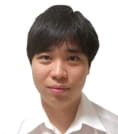
Researcher
R&D Center
Sony Group Corporation
Outline
I study Shimura varieties, which is studied by many people in arithmetic geometry, and apply them to the post-quantum cryptography. First, I will solve the Kudla’s modularity conjecture for noncompact Shimura varieties and classify them by calculating their invariants. As their applications, I will give new methods to study algebraic geometry or other fields. Second, I will propose new post-quantum cryptography “Shimura Variety Cryptography” by using Shimura varieties instead of algebraic surfaces and generalizing Algebraic Surface Cryptography to higher dimensions. Finally, by studying in pure mathematics and applied mathematics, I will strengthen the connection between them and introduce the methods to each other.
Hisayoshi Muramatsu
Development of Periodic/Aperiodic Separation Control
Grant No.:JPMJAX200Q
Researcher
Hisayoshi Muramatsu

Assistant Professor
Graduate School of Advanced Science and Engineering
Hiroshima University
Outline
The development of periodic/aperiodic separation control redefines a state as a periodic/aperiodic state composed of a periodic state and aperiodic state by introducing a periodicity/aperiodicity point of view to the single state. For control and analysis of the separated periodic and aperiodic states, the project conducts 【A】Construction of an optimal periodic/aperiodic separation filter, 【B】Construction of robust periodic/aperiodic separation control, and【C】Development of periodic/aperiodic interactive robot.
Hiromu Yakura
Imitation Framework of Perceptual Styles for Creativity Support
Grant No.:JPMJAX200R
Researcher
Hiromu Yakura

Graduate Student
Graduate School of Science and Technology
University of Tsukuba
Outline
End-to-end media transfers based on deep learning techniques have little affinity with exploratory design processes, and thus, have not been widely used for creative purposes. This research aims to establish a framework to alternate them by exploring with explicit and intuitive parameters. It is expected to lead to the development of a creative support system and the introduction of new design processes.
Sho Yokoi
The association between the shape of the word embedding space and the meaning of words
Grant No.:JPMJAX200S
Researcher
Sho Yokoi
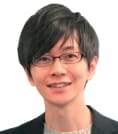
Assistant Professor
Graduate School of Information Sciences
Tohoku University
Outline
The development of word embeddings has led to significant advances in the field of natural language processing. However, for sentences that are larger textual units than words, neither the meaning representation nor the comparison method has been established. Consequently, it is still difficult to even detect fatal errors of language processing systems. In this study, we first aim to attribute the geometric information of word vectors to linguistic information, and then construct a sentence-similarity metric that is sensitive to differences in the information contained in sentences using optimal transport as a foothold. By doing so, we aim to solve the issue in computing the inter-sentence similarity.
Naoya Yoshimura
Complex Human Activity Recognition using Image Representation of Time-series Signals
Grant No.:JPMJAX200T
Researcher
Naoya Yoshimura

Graduate Student
Graduate School of Information Science and Technology
Osaka University
Outline
An application of activity recognition technology using wearable sensors is being investigated for monitoring workers in factories and distribution warehouses. To realize automatic monitoring in these places, it is necessary to recognize work processes, which consist of multiple atomic actions, with a small amount of training data. In this research, I call this kind of activity ”complex activities”, and aim to realize the Few Shot segmentation of complex activity by utilizing the image representation of time-series signals to learn the short term and long term dependencies of complex activity data in advance.
Masaki Waga
Safe CPS with approximate mathematical models
Grant No.:JPMJAX200U
Researcher
Masaki Waga
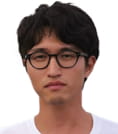
Assistant Professor
graduate school of informatics
Kyoto University
Outline
Conventionally, systematic quality assurance of cyber-physical systems (Safe CPS) utilizes rigorous mathematical models (Safe CPS 1.0) or search-based techniques (Safe CPS 2.0). These methods have issues in practicality and explainability, respectively. This research aims to achieve both practicality and explainability (Safe CPS 3.0) by combining the mathematical methods from Safe CPS 1.0 and search-based techniques from Safe CPS 2.0.













